MSI WS66 Mobile Workstation
MSI has made some outstanding gaming laptops, and the latest WS66 is an ongoing exploration of the related mobile workstation market.
There is a demand for high power laptops to avoid the inconvenience of lugging entire desktop systems around and the inevitable impact on reliability that doing that creates.
Typically these systems tend to forego an extended battery life for better processor and video performance, confident that the user will have mains power available.
Originally a 10th Gen CPU design, MSI engineers have revamped the WS66 to use the latest Intel 11th Gen Core i7, i9 or Xeon processors and combined the new platform with Nvidia Geforce RTX discrete graphics silicon.
Is the WS66 a workstation a credible way to carry a proper workstation around, or is there an underlying problem with putting desktop computing technology in a laptop?
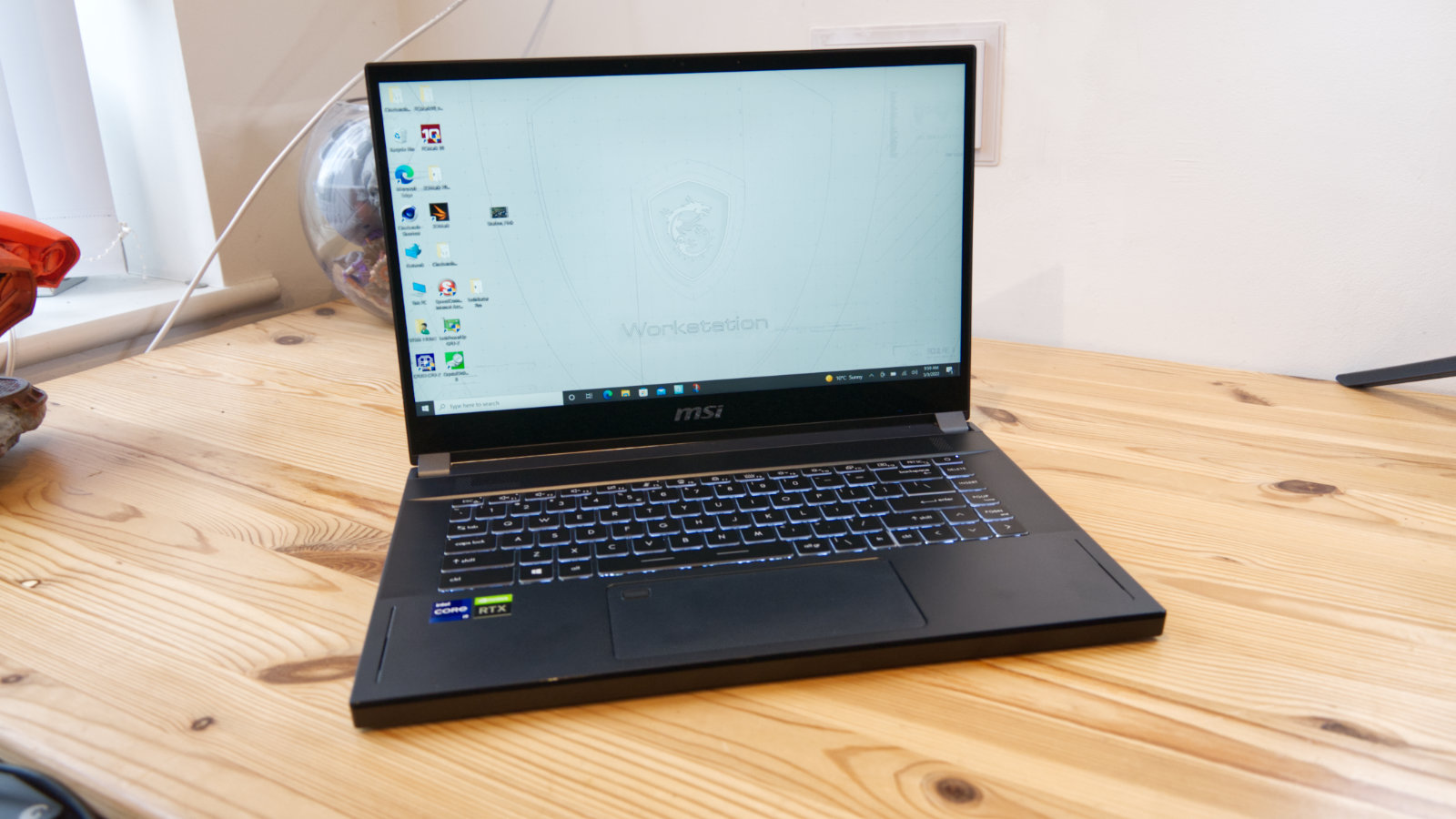
Price and availability
MSI has three versions of the new WS66, one with the GeForce A5000 mobile GPU and 64GB of RAM, and two with the A3000 and 32GB of memory. The flagship design uses a Core i9-11900H processor and is officially priced at $4,199.
The middle-order model has the same Core i9 class processor but the less powerful A3000 GPU and costs $2,999. The cheapest WS66 option is one with a Core i7-11800H processor. The A3000 GPU and 32GB of RAM for $2,599.
These machines come with a 1TB NVMe SSD, a 1080p resolution display, the same battery size, and a Windows 10 Pro pre-installed.
There are Xeon powered versions of this machine coming, but we don’t have prices for those at this time.
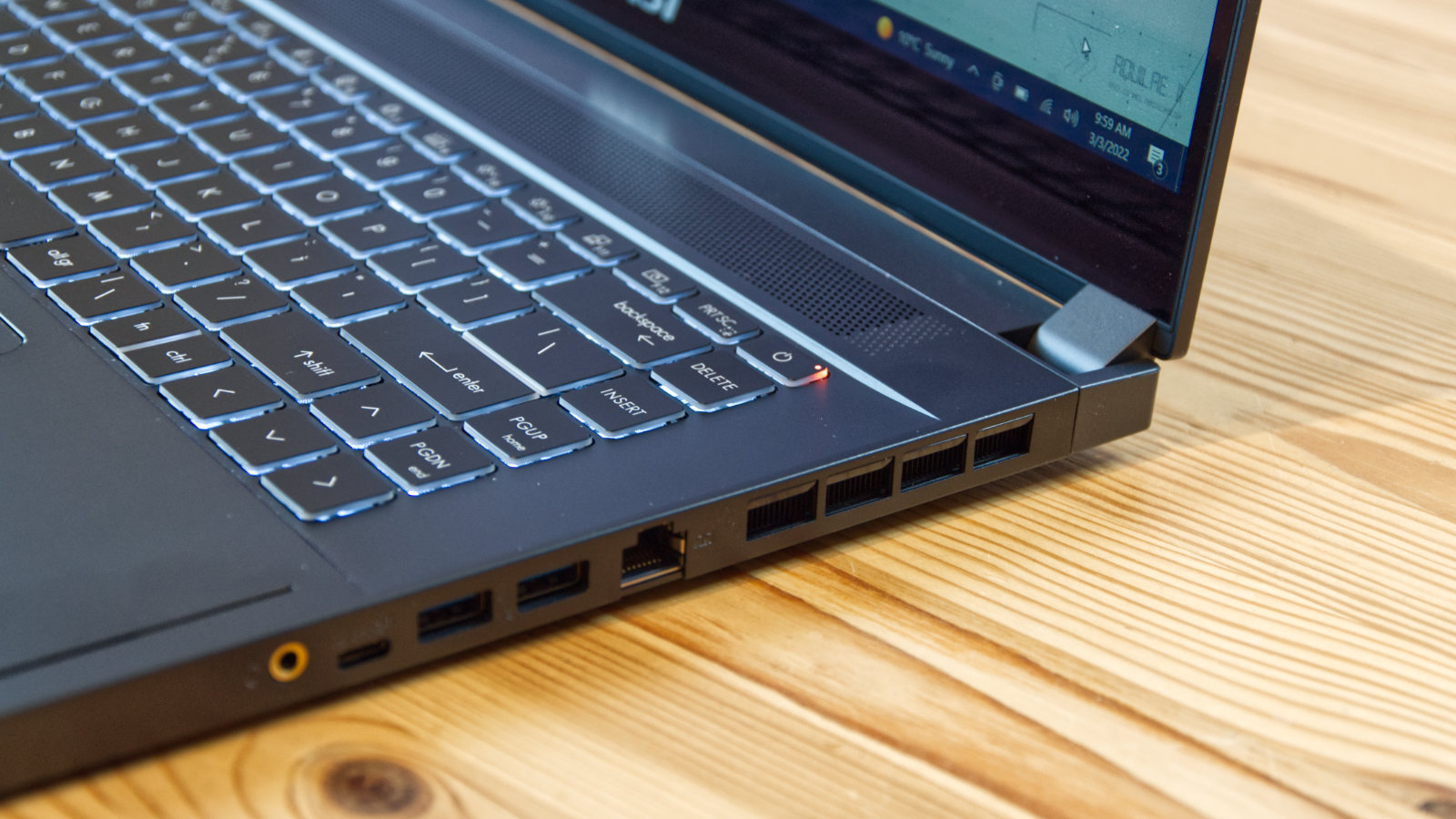
Design
On the outside, there is nothing revolutionary about the WS66, as it looks practically identical to the 10th Gen platform version of this laptop.
The upper lid surface is metal skinned, with the rest of the outside being primarily plastic. Where it diverges from a conventional laptop design is in the large air vents on the rear portions of the sides, across the rear of the hinge and most of the underside at the back.
We’ll discover later in the review why it needs such excessive ventilation, but keeping things cool inside this case must have occupied a disproportionate amount of time of those engineering it.
Typical we’d talk about the layout inside, but MSI put a label marked ‘Factory Seal’ over one of the screws on the underside, indicating that they don’t want people going in there, for whatever reason.
Overall, this is a well constructed and designed system, and the changes from the previous model are primarily internal.
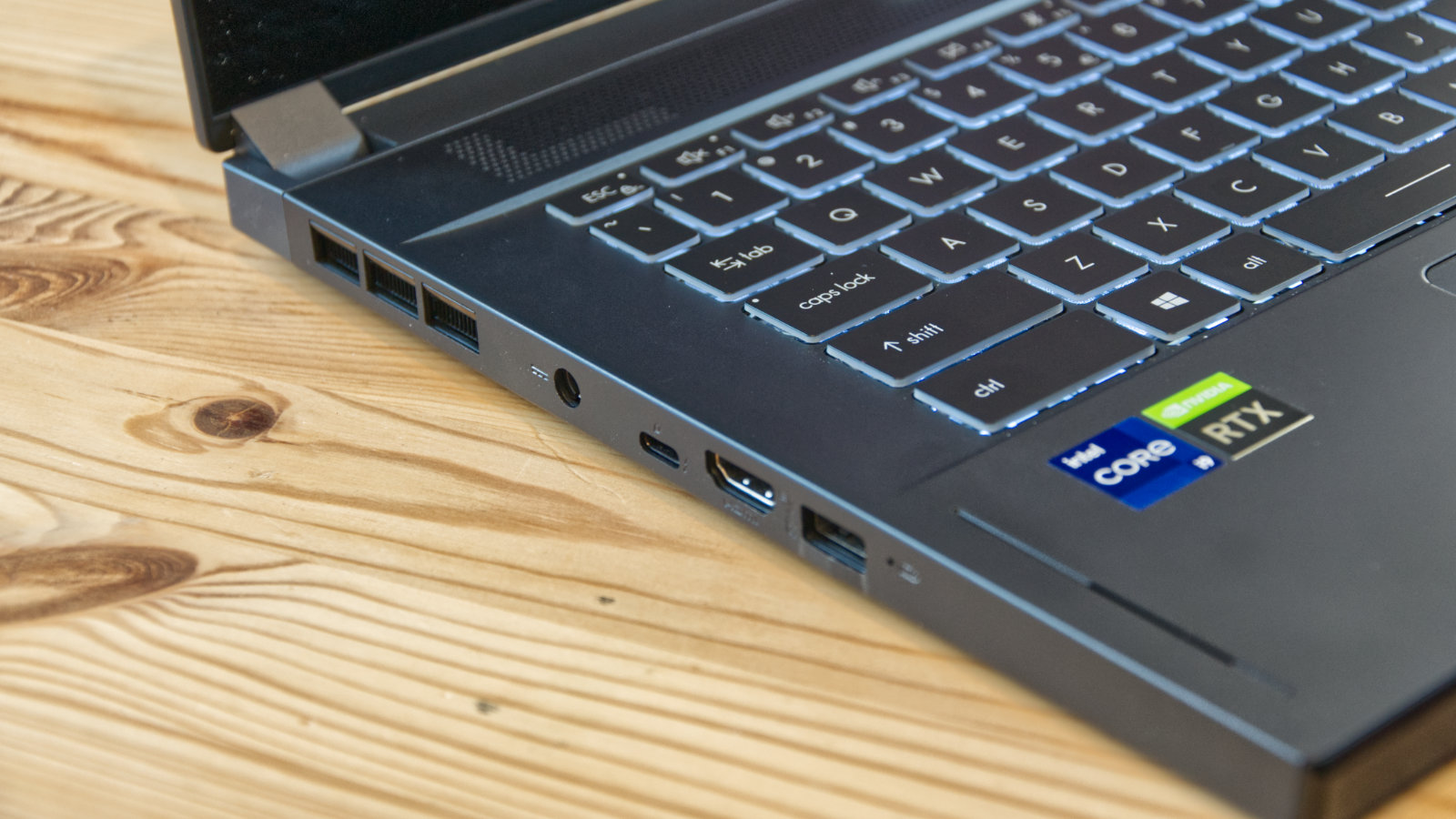
Hardware
Here is the MSI WS66 configuration sent to TechRadar for review:
CPU: Core i9-11900H
Graphics: Nvidia GeForce A5000 Mobile
RAM: 64GB DDR4 RAM
Screen: 15.6" FHD (1920*1080), Finger Touch panel
Storage: Phison 1TB SM2801T24GKBB4S-E162 NVMe SSD
Ports: 1 x Thunderbolt 4 USB-C (compatible with USB 3.2 Type-A Gen 2), 1 x USB 3.2Gen2/DP, 3 x USB3.2 Gen2 Type-A, 1 x HDMI, 1 x universal audio jack
Connectivity: Killer AX1675x Wireless Network adapter, RealTek 2.5GbE LAN adapter, Bluetooth v5.2
Camera: 1x IR & 720p HD Camera with Microphone
Security: Fingerprint Reader, Windows Hello via IR camera, dTPM 2.0 Chip
Weight: 2.1kg/ 4.63lbs
Size: 358.3 x 248 x 19.8 mm (W x D x H)
Battery: 4 cell 99.9Whr Li-Polymer
There are other aspects of the new WS66 that we could talk about, but the two highest-profile parts are the 11th Gen CPU and the RTX A5000 GPU.
The review hardware used an Intel Tiger Lake chipset and Core i9-11900H CPU with eight cores and 16 thread processing.
Early 11th Gen CPUs from Intel were very disappointing as they were all quad-core, but the later designs like this Core i9 demonstrate the enhancements in single-thread performance and better power efficiency.
Power consumption is critical on a mobile system. A configurable limit of 45W TDP on this chip and a turbo mode that boosts from standard 2.5GHz up to 4.9GHz allows for some computational sprinting.
Ironically, the integrated GPU is also significantly improved. But on this system, it largely remains inactive due to the Nvidia A5000 discrete graphics.
On paper, the A5000 GPU is based on the same Ampere architecture as the GTX 3080 that gamers have admired but been unable to afford since crypto-miners bought them all.
There is only one snag, the video card in this laptop is a mobile A5000 and not a desktop A5000, a confusing naming convention that appears designed by Nvidia to convince customers that they have something they do not.
The chip code for the desktop A5000 is GA102, and the mobile A5000 uses a GA104 offering 6144 unified shaders and a 256bit wide memory bus achieving 384GB/s bandwidth. In comparison, the desktop A5000 has 8192 shaders, a 384-bit wide memory bus and 768 GB/s of bandwidth.

Those are significant differences, and to get a fuller flavour of the performance gap, we tested a Boston Workstation machine that used a desktop A5000 and achieved 9665 in the 3DMark Port Royal raytracing test and this laptop managed just 5,889.
Admittedly that didn’t factor the different CPUs in those tests, but we’d contest that the mobile A5000 is about half what the desktop GPU is, and that’s reflected in the amount of power that the video card can consume in the WS66, a fraction of the 230W that the desktop GPU can pull.
Good equivalent desktop GPUs would be the RTX 3060 or RTX 2070, making the mobile A5000 appear markedly less special for those needing GPU performance above all else.
Overall, the performance of the WS66 for a laptop is good. But, it’s not a credible replacement for a fully specified desktop workstation platform, being realistic.
In use
The user experience is marred by one significant and impossible to ignore factor, the sound of cooling. We’ve covered high-performance laptops before that get noisy once they’re under duress, but the WS66 has loud fan noise from the moment you turn it on until you turn it off.
If it weren’t for this one defining aspect, using the WS66 would mostly be a delight.
The screen is bright, touch-capable and offers excellent contrast, the keyboard is backlit and easy to type on, the trackpad is a good quality design, and there are plenty of useful ports.
It comes with a massive PSU block, but to deliver the 230W that this system needs, it was always going to be large. The inclusion of a Thunderbolt 4 port allows for that to be used for charging, but MSI doesn’t provide for this option, and charging using this port would take longer than the dedicated proprietary PSU.
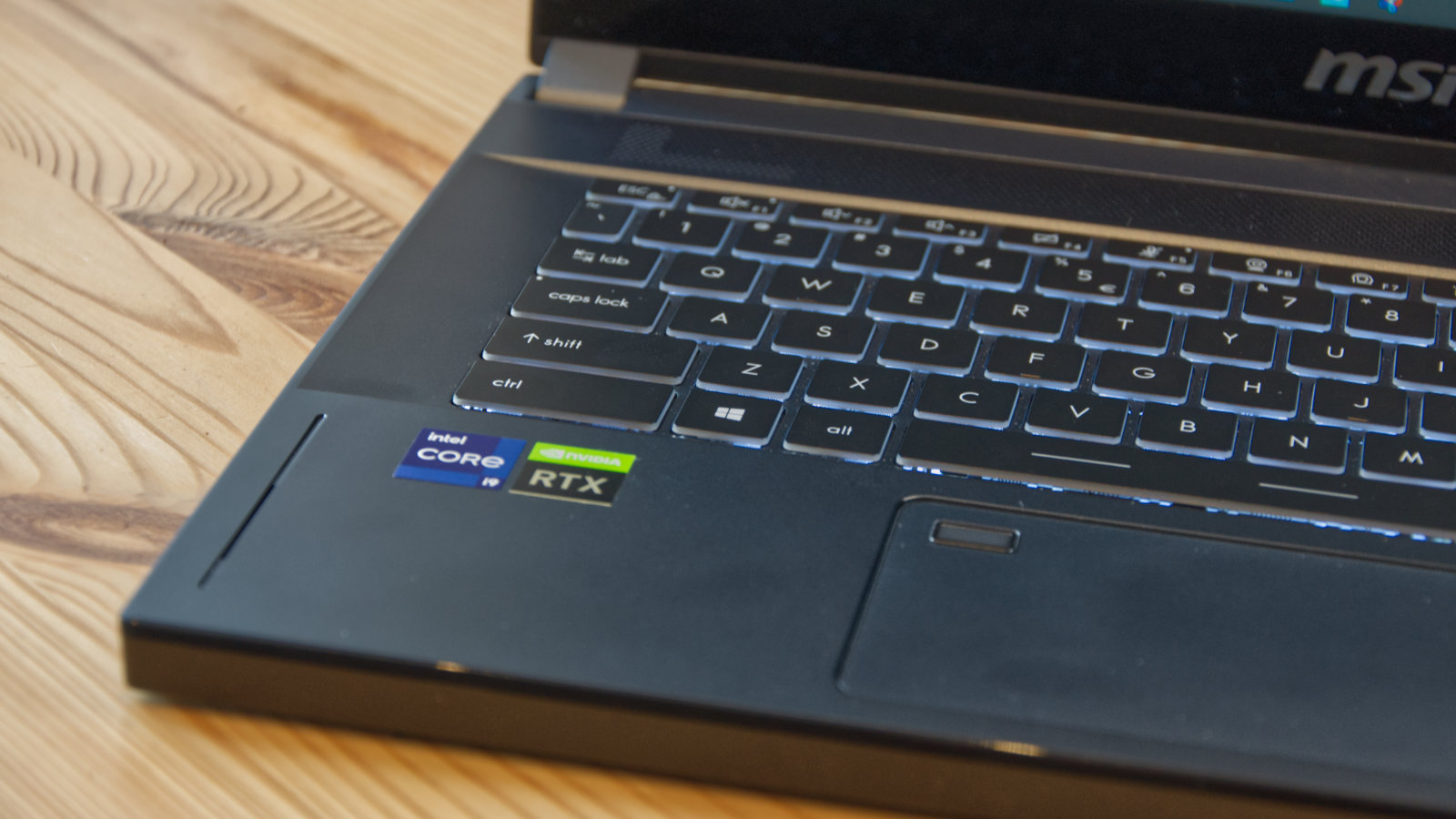
Performance
Here's how the MSI WS66 scored in our suite of benchmark tests:
3DMark Wild Life: 55,391; Fire Strike: 22,384; Time Spy: 9574; Port Royal: 5889
Cinebench R23 CPU: 1548 (single-core); 10,431 (multi-core)
GeekBench 5: 1,583 (single-core); 8,477 (multi-core), 116,465 (OpenCL)
CrystalDiskMark: Sequential Read: 4,092MB/s; Sequential Write: 2,108MB/s PCMark 10 (Home Test): 6,700 points
PCMark 10 Battery Life: 4 hours and 19 minutes
Windows Experience Index: 8.1
Compared with an ultrabook design, the performance of the WS66 is impressive, but then most computers would be significantly better when given the power budget this design consumes.
Where it obviously shines is in respect of any test that involves graphics or heavy compute loads, like the 3DMark benchmarks and the Cinebench scores.
These numbers are good by mobile standards, though nothing special by desktop equivalents. If it weren’t for the ridiculous prices that GPUs have achieved, it would be possible to build a desktop system that could outperform this machine for under $1,000.
What surprised us most was how long it lasted on battery. At close to 4 hours and 20 minutes, this is an operating time that could make this machine useable on battery if a single charge can be obtained in the middle of the day.
But, tempering that thought somewhat, the PCMark10 battery test doesn’t rely heavily on the GPU in the way a user might. And, given that the WS66 has 99Whr of battery, maybe that’s not as good as it initially seemed.
A more certain disappointment of these tests was the Phison NVMe that MSI used in it. The performance of this drive is totally at odds with the rest of the system, and for those working with datasets or video, it would likely be the major performance bottleneck.
We can think of half a dozen NVMe drives that would be a better choice than this one.
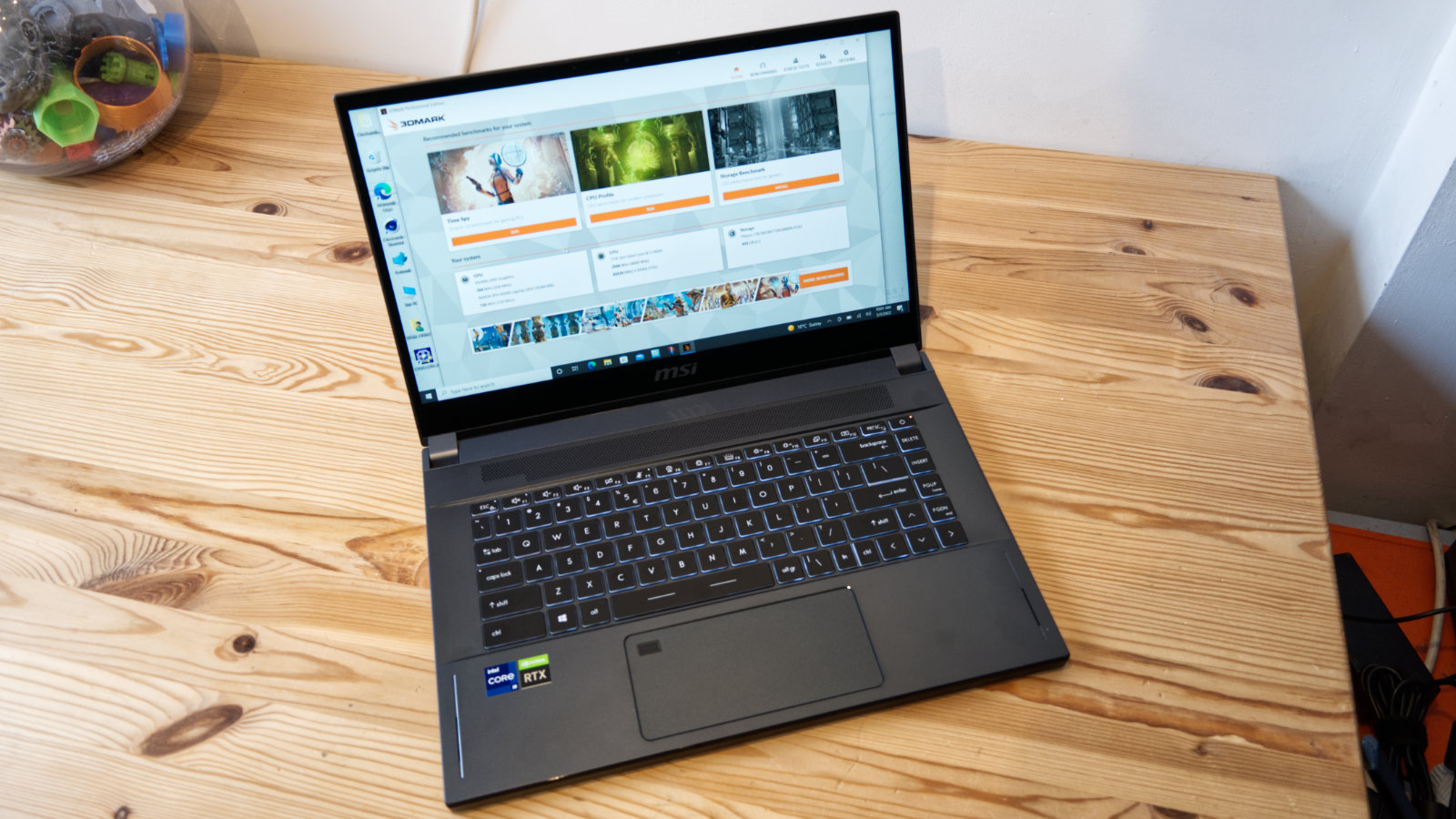
Final verdict
The thinking behind the WS66 has focused on providing the best possible performance for a mobile system. And, it largely succeeds in delivering, yet in achieving that, there are several significant drawbacks and some creative license by Nvidia in calling the GPU in here an A5000, when it’s a shadow of the desktop GPU of the same name.
Those currently using an A5000 in a desktop workstation would notice a dramatic reduction in performance if they swapped it for a WS66. Conversely, those upgrading from a lesser discrete mobile GPU might find this system much faster.
But, what they’ll both notice is that their working day now comes with a constant drone of fans, and at a level that some might find quickly distracting.
The constant fan noise would soon grind on those who live with a system for the entire working day and take away much of the enjoyment that such a powerful platform offers.
At more than 2Kg, it is also heavy, making it a system we’d regret carrying for any significant journey.
The WS66 is empirical proof that there are no free lunches in computing, and every major advantage comes with a counter-proposal.
0 comments:
Post a Comment